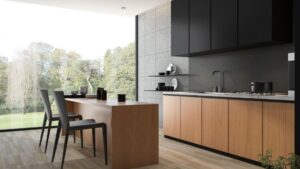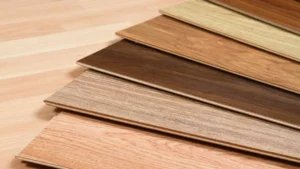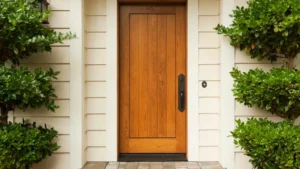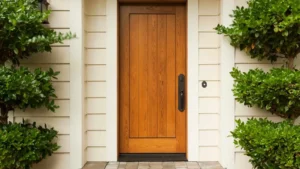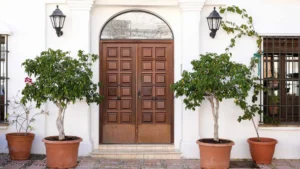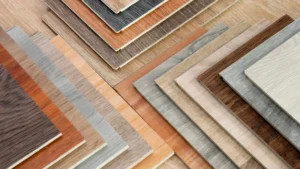If one carries out a survey, probably the majority would vote in favour of Plywood over particle board, just based on the general perception. But what is the ground reality? Let’s find out.
What do you think could be the response of furniture manufacturers, sellers, realtors, regular and alternative construction material sellers or homeowners and end-users? The contest between the two may be much closer than what you may have previously believed. Both have their own advantages and disadvantages and it all depends on what you are looking for.
Let us carry out a comparative analysis of plywood and particle board.
(1) Cost Advantage: ‘Cost benefits’ is often the deal clincher. It is undeniable that it is one of the most important considerations while choosing one over the other. And simply based on this parameter, we would place particle board over plywood. Furniture made from particle board is definitely more economical than those made from plywood.
(2) Moisture Resistance: Plywood holds an edge over particle board here. Furniture or other items manufactured from particle boards are known to swell and the decorative laminate may start to come off if they are exposed to moisture for a long time. The user has to create a separate protective mechanism to stop moisture from affecting the particle board surface.
(3) Smoothness of the finished surface: Particle board surfaces are normally smoother and slicker than plywood. Plywood, due to its cross-grain surface, even after rubbing the surface with sand paper, can never achieve the kind of smoothness that particle board has. Particle boards, on the other hand, allow more even distribution of the finish material on its surface, like decorative laminates, and thus gives an immaculate finish.
(4) Composition: Since the two have different methods of manufacturing, there are some fundamental differences in the composition of plywood and particle board.
Particle boards are mainly prepared by using particles or chips of wood which are glued together. The mixture is then pressed under great pressure and in the presence of heat to form flat boards which are then used for making furniture.
Plywood on the other hand, is made by gluing several layers of ply or wood veneers in a cross-grain pattern i.e. one layer alternating with another and in the process sheets are formed. From these sheets furniture or other items of home decor and even building construction can be made.
The difference in composition or style of manufacturing gives rise to the question of strength or durability which would be our next point of discussion.
(5) Durability: This is again a deal maker or breaker. Any buyer would want his purchased product to last long. The cross-grain pattern of plywood lends it immense strength and as a direct consequence, it is more durable than particle board. Gluing decorative on the plywood surface can increase the strength even more.
(6) Ease of handling: Since plywood furniture is stronger with the cross-grain pattern, the surface holds up nails and screws better than particle board. Particle boards being softer and more brittle can get easily damaged if nails are hammered in hard into the surface. But glue works fine with both.
One advantage of particle board over plywood is that it doesn’t have voids or gaps in its surface. But voids can sometimes form on plywood surfaces and if it happens, then the screws and nails may become completely ineffective and can come off.
(7) Weight: Plywood sheets are lighter than particle boards. So if one has to carry the boards up the staircase or walk some distance, plywood would make a more sensible choice. Also when making a big wall cabinet or one hanging from a soffit, the weight consideration may gain some significance and plywood would score higher than particle board. Sometimes the weight of particle board furniture may dent or deform the wheels underneath and displacing the furniture becomes difficult.
(8) Ready-made versus custom-built: Particle board furniture is usually ready made and readily available in the market. Decorative laminates / Decorative Paper is usually pasted on the surface at the time of manufacture. So one disadvantage of particle board is that it doesn’t offer the kind of variety that plywood offers. Decorative Laminates or Veneers that are pasted on plywood come in a variety of colours and texture. Even if you don’t use decorative laminates, the variety of designs available in plywood is huge. So in that sense, plywood is a customer’s delight as well as a maker’s delight because there is a lot to experiment with.
This readily leads to the question of quality. Since particle board furniture is usually readymade and more economical, they are more damage prone as their longevity is not as good as that of custom-built plywood furniture.
Since it is not easy to work with conventional carpentry tools while making furniture out of particle boards, carpenters usually refuse to make custom built furniture with particle boards. Plywood has many different forms and varieties depending on the area of application ranging from Moisture Resistant (MR) to Marine Grade.
(9) Environmental consideration: Particle boards are environmentally friendly. They can be made from scraps of other timber and wooden products. So there is no need of sawing and as a result, there is no problem of waste disposal. This makes particle board environmentally safer. Also, a lower number of trees are felled to make particle boards as against plywood which is made from solid wood.
So if you weigh the pros and cons of the two, a clear winner won’t be visible. Hence, it comes down to personal choice and the purpose of use.
But if you are looking for longevity and quality, you might as well show a greater inclination towards plywood. And if so, it would be a prudent decision to look at the best that is available out there. Sarda Plywood has never compromised with quality. We have always tried to be the best, not the biggest and we have today created a niche in the market and a wide base of satisfied customers. Duro brand from Sarda Plywood stands for excellence.
To know more about our products and brands, please check our website https://www.sardaplywood.in. A whole new level of experience awaits you at SPIL!
